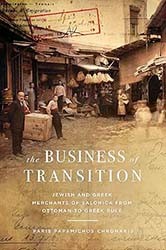Banker Edmond J. Safra (1932−1999) was an observant Sephardic Jewish man who believed that bankers should lead modest, inconspicuous lives. “How do you expect people to trust you if they see you gambling?” he recalled his father telling him. Taking this advice, he developed a banking style that was intensely conservative. He avoided the stock market and most retail consumer lending, preferring to lend to large corporations and governments, or to make plays in low-risk arbitrage. For Safra, the mission of banks was to offer stability and security to the communities they served. Modern readers, accustomed to bank failures and bailouts, and to financiers flaunting their money in all the wrong places, might find Safra’s story so straight-laced that it’s perversely interesting.
Born near Beirut, Edmond Safra grew up in a banking family in Aleppo’s tight-knit Jewish community. He was fifteen when his father sent him to Milan to start a gold-trading operation, buying and selling various countries’ coins or melting less-desirable coins into ingots. At the same time, pogroms in Aleppo and Beirut were sending Jews fleeing. Edmond facilitated his family’s move to Brazil, though he would go on to establish his banking business in Geneva. Before long, he established his flagship Republic Bank in New York City — notorious for giving away TVs and other appliances to new clients. The bulk of Republic’s business, however, was corporate and government lending. As his banking empire expanded to London and other major financial centers, Edmond still met clients and made investment decisions himself. His one attempt to go mainstream, merging with American Express, was a mistake that took him years to unwind. Safra avoided overt connections with Israel while Jews remained in Beirut, but by the 1990s, he supported Israel openly. In his early sixties, feeling the onset of Parkinson’s symptoms, Edmond started closing down his banking empire by negotiating a sale to HSBC. He would not leave his clients in the lurch.
The whole storyline here is the building of the banking empire; Edmond’s intimate life is left opaque. We see he was a family-oriented man who loved Sephardic culture and gave to charity generously. In the early seventies, he married socialite Lily Monteverde and warmly embraced her children. Gross does not discuss the women with whom Edmond was close before Lily, Lily’s own background, or the Safra family’s reactions to the marriage. Perhaps Gross felt uncomfortable delving into the “personal,” but it’s an important aspect of most biographies.
Ultimately, the intended takeaway from the Edmond Safra story remains somewhat unclear. Is it that a hard-working, pious man can overcome all obstacles and make a fortune? Or that bankers and other financiers can act in the best interests of a community, that they can be powerful forces for good in the world? Regardless, Gross narrates the financial story with a deft hand.
Bettina Berch, author of the recent biography, From Hester Street to Hollywood: The Life and Work of Anzia Yezierska, teaches part-time at the Borough of Manhattan Community College.





